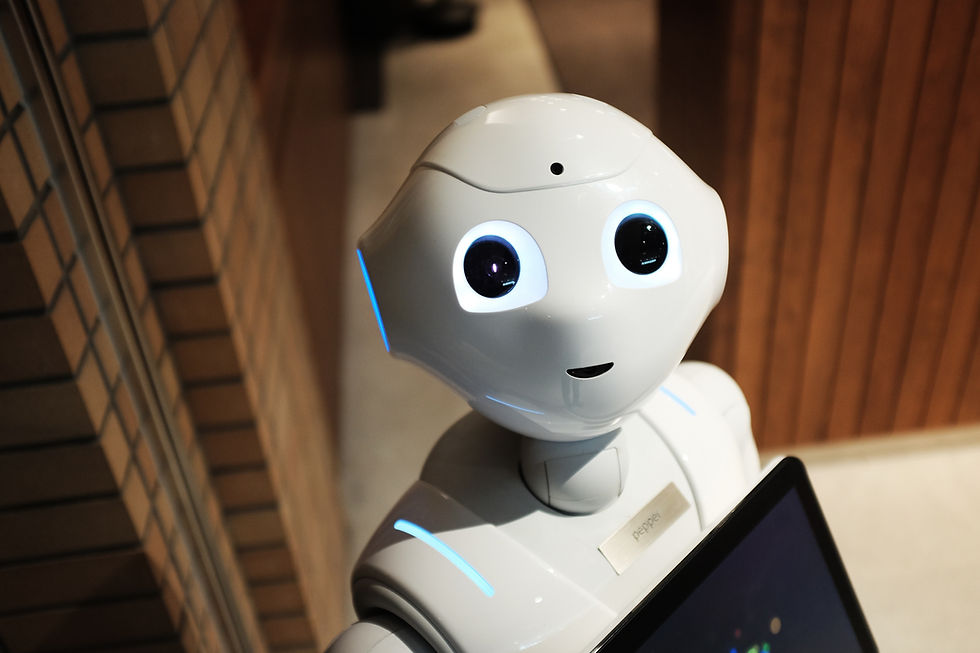The AI Revolution in Graphic Design: Embracing Change for Revenue Generation
- Gurpriya Kaur
- Jul 28, 2023
- 3 min read
Introduction
The graphic design industry has always been a dynamic field, evolving with advancements in technology and creative trends. In recent years, artificial intelligence (AI) has emerged as a transformative force, disrupting traditional design processes and offering new possibilities for designers. In this blog post, we will explore how the graphic design industry can change with AI and how designers who adapt to these changes on time can capitalize on revenue generation. Let's delve into the key aspects of this AI revolution and its potential impact on graphic designers.
1. AI-Driven Automation for Efficiency
AI-powered tools can automate repetitive and time-consuming tasks, such as image cropping, resizing, and color adjustments. By streamlining these processes, designers can focus more on creative aspects and higher-value tasks. This increased efficiency allows them to take on more projects, meet tighter deadlines, and allocate more time to nurture client relationships, ultimately leading to enhanced revenue generation.
2. Enhanced Creativity and Collaboration
AI is not here to replace designers; rather, it complements their creative capabilities. AI-driven design tools can suggest layout ideas, font pairings, and color schemes, providing inspiration and speeding up the ideation process. Moreover, collaborative AI platforms enable designers to work seamlessly with clients, receiving real-time feedback and making rapid iterations, fostering a more productive and satisfying design experience.

3. Personalization and Customization
AI algorithms can analyze user data to understand individual preferences and behaviors. By harnessing this power, designers can create personalized design solutions that resonate deeply with their clients' target audiences. Personalized designs lead to higher customer engagement, increased brand loyalty, and ultimately, more repeat business for the designers.
4. Augmented Reality (AR) and Virtual Reality (VR) Integration
As AR and VR technologies continue to gain popularity, designers can utilize AI to craft immersive and interactive visual experiences. By incorporating AI-generated 3D elements and animations, designers can create captivating AR and VR content that captivates users, attracting more clients seeking cutting-edge design solutions.
5. Data-Driven Design Decisions
AI can process vast amounts of data and provide valuable insights into design performance and user behavior. By leveraging data analytics, designers can make informed decisions to optimize their designs for better engagement and conversion rates. This data-driven approach not only enhances the effectiveness of design solutions but also showcases the value of the designer's work to clients, leading to increased revenue opportunities.

6. Branding and Logo Design
Branding is crucial for any business's success, and AI can play a pivotal role in crafting impactful brand identities. AI algorithms can analyze market trends, competitor branding, and consumer preferences to create logo designs that align perfectly with a brand's values and target audience. With a well-designed logo, businesses can establish a strong brand presence, and designers can command higher fees for their expertise in creating brand assets.
7. Accessible Design for Inclusivity
AI-powered design tools can assist in creating more accessible designs that cater to users with disabilities. From generating alt text for images to ensuring color contrast compliance, AI helps designers create inclusive designs that cater to a broader audience. Inclusivity not only demonstrates social responsibility but also opens up new opportunities for designers to collaborate with diverse clients seeking accessible design solutions.
Conclusion
The graphic design industry stands on the brink of a transformative era with the integration of AI technologies. By embracing AI-driven automation, designers can enhance their efficiency and productivity, leading to increased revenue generation. Additionally, AI augments creativity, enabling designers to create personalized, immersive, and data-driven design solutions that resonate with clients and their audiences.
To thrive in this AI revolution, graphic designers must be proactive in adapting to new tools and workflows while continually honing their creative skills. By staying ahead of the curve and embracing AI as a collaborative tool, designers can position themselves as sought-after experts capable of delivering cutting-edge design solutions. Embracing the change brought by AI can indeed open up a world of opportunities for graphic designers to thrive in this fast-paced and ever-evolving industry.

Progress covers the past with heavy blankets for future peeks by historians.